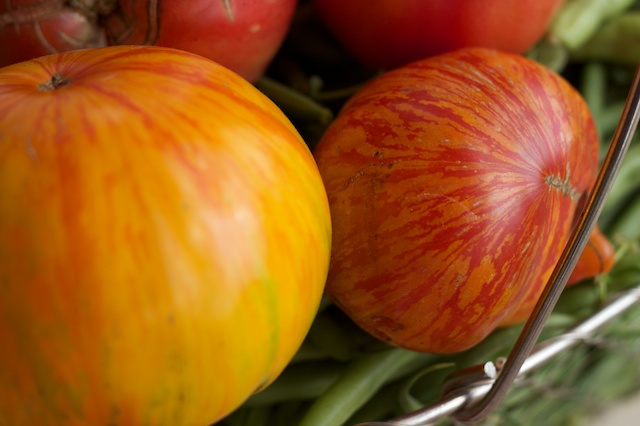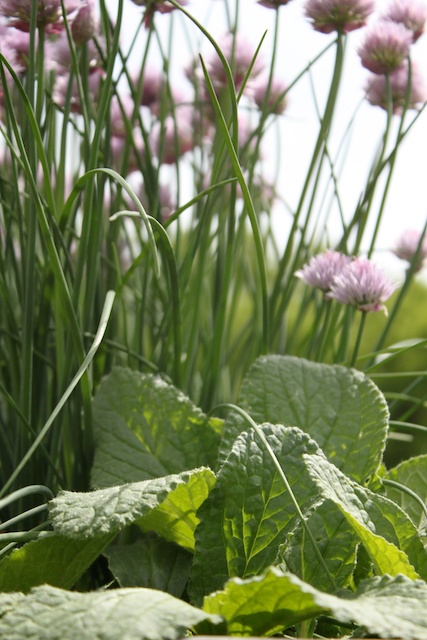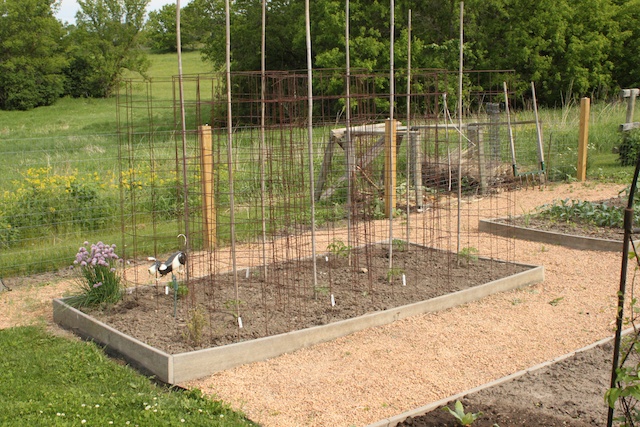Garden Tomatoes.
Can you ever have too many?
Yes and no, is what I say. Yes, if you are buried under mounds of work and untended-to yard and garden chores. No, if you have all the time in the world. Like my kids seem to have…
nevermind.
I am told it is a bad year for tomatoes in these parts. In my little corner of the world, it isn’t so bad. Better than last year for sure, but not as good a a few years ago.
I think all the rain — records smashed here in Minnesota– has made them get the blight sooner for most people, though not for me. I struggle with that particular problem every year, no matter where I plant them, what they are mulched with, or how much rain we get. Blight just seems to be my lot in life.
I accept that.
Right now though, I’ve got tomatoes coming out my ears. I picked a full bowl yesterday.
And left at least that many more on the vine. Making salsa is out of the question. I have no time. Hopefully I will soon, but even if I did have the time, there is something about preserving garden surplus that just doesn’t sit well with me in August.
Why is that? The most I seem to be able to do is chop and freeze. Or, on a really good day, roast, puree and freeze.
One thing I meant to write about earlier in the season was the strange way the plants were sold by the nursery this year. I bought them from a different place than usual since I was so behind schedule and had to pick them up when I could find them. Sadly, I had no time for a special trip to my local grower. I found my main-stay Brandywine in a fairly large sized pot while shopping for flowers and bought two pots. Oddly, this nursery had allowed several seedlings in the same pot to grow. So instead of having one sturdy seedling, there were about six. My understanding has always been that this is a huge no-no, so I asked one of the people at the nursery and they said not to pinch any back, but to let them all grow. I’m still not sure if they knew what they were talking about, but at the very least, because I also planted a pot with a only single seedling, it would prove to be a fun experiment.
With pretty much no conclusion.
At this stage in the game, when compared to my single-seedling plants there isn’t much difference. I can’t even say for sure if the multi-seedling plants were more susceptible to the blight or not. That was my hunch, but I would guess, from looking at them planted all together, that blight damage is more a factor of proximity to another blight-damaged plant than to multiple seedlings in a single planting.
This is a very boring post, isn’t it.
Anyway, getting back to the title, “how much is too much”, it really didn’t refer to the harvest. It pointed back to the eating. How much is too much?
Is this too much?
Because that was my lunch yesterday. I decided to eat the split tomatoes before the fruit flies (curiously absent so far this year) found the leaking fruits. But there were three (!) split tomatoes.
So I ate them all.
Is that too much?
Is that gluttony?
I tempered it with some fresh moz. I love fresh mozzarella. Sometimes I think the tomatoes are just an excuse.
I also heaped the rest of my quinoa salad on the side. Which I thought I had already posted here, but I apparently did not. Or did I? I can’t find it. Can anyone help me resolve this burning question?
Anyway, this salad is SO GOOD! Make some today or as soon as the temperature starts to melt you. It keeps in the fridge for about 3 weeks.
I’m kidding. Not three weeks. More like 1 or 2. Just smell it for gawd sake. Everyone is so flipping freaked about about things going bad! Just SMELL IT! If there isn’t anything funky growing on it and smells the same, eat it and stop being so paranoid. I’m still alive. That should give you some confidence.

Or not.
Quinoa Salad with Fresh Anything
- 2 cups quinoa, rinsed (skip the rinse if you are lazy like me)
- 2 teaspoons salt
- 1/4 cup fresh-squeezed lemon juice (more or less to taste)
- 1/4 cup olive oil
- various fresh veggies diced: onion, cucumber, tomato, sugar snap peas, asparagus, sweet peppers, fresh raw corn, etc.
- 2T chopped fresh herbs: any combo or single addition of basil, mint, cilantro.






















